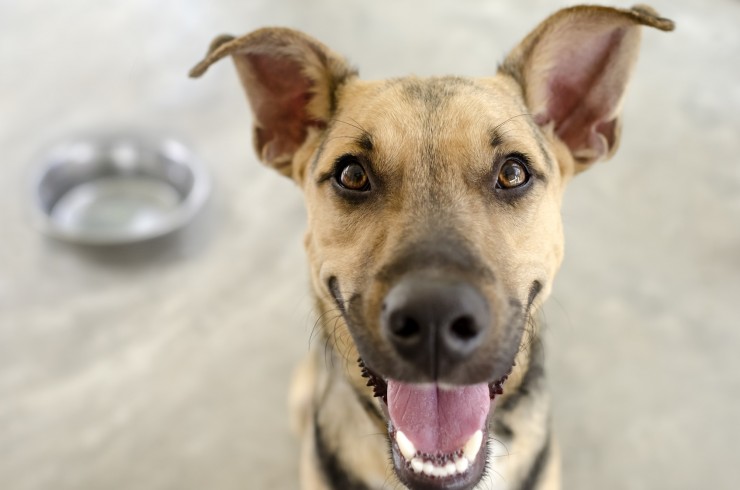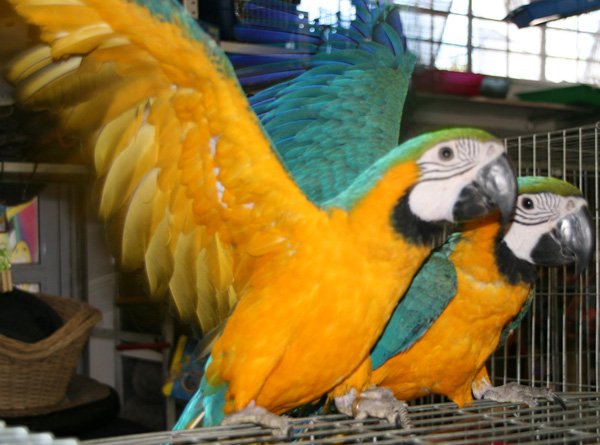

Nystagmus is the technical term used to refer to an involuntary and very rapid movement of the eyes, which makes it appear as if the dog’s eyes are wobbling within their sockets or darting from side to side very quickly. The condition is also referred to as dancing eyes, and of course, witnessing this happening in your dog can be both unnerving and frightening.
Nystagmus may also be accompanied by tilting the head to one side and walking in circles, and often leads dog owners to believe that their dog is having a stroke. However, this is unlikely to be the case, and there are various potential reasons for the presentation of nystagmus in the dog, which we will look into in more detail within this article.
Nystagmus is an involuntary movement of the eyes, and as such, is not something that your dog has any control over. Your dog will be aware that it is happening insomuch as their vision will be affected, but they cannot voluntarily stop or control the movement. Nystagmus usually occurs with the eyes moving from side to side, but can also happen with the eyes moving up and down instead.
Nystagmus is generally related to the dog’s vestibular system, which is a complex sensory system located within the inner ears. The vestibular system fulfils a lot of important roles, including giving your dog a spatial awareness of their head and body in relation to their surroundings, allowing them to maintain balance and coordination, and coordinating the movements of the eyes.
Nystagmus itself is caused by the vestibular-ocular reflex, which is what allows your eyes to focus. This can be seen in action when you look at an object while moving your head to one side or the other; your eyes can remain fixed forwards or in direct view of the object. This type of nystagmus is normal, but when the head is not moving but the eyes are roving around without focusing, this is classed as abnormal nystagmus. Generally, abnormal nystagmus can be directly connected to an issue with the wider vestibular system of the dog.
We will look at some of the most common reasons for abnormal nystagmus in the dog below.
The inner ear is closely connected via the vestibular and auditory nerves to the brain itself, and is located physically near to the external and middle ear. Infections of the middle or inner ear can affect the whole vestibular system of the dog, which will affect their senses of balance and coordination as well as their eyes.
Other symptoms of an inner or middle ear infection commonly include head shaking, a foul discharge from the ear, scratching at the affected ear, and in serious cases, rupture of the ear drum itself.
Your dog may also be reluctant to open their mouth or eat, as the movement of the jaw can lead to direct pain in the ear.
We have covered vestibulitis or vestibular disease in more detail within this article, but in basic terms, the condition is a disorder of unknown origins that most commonly affects elderly dogs. It can lead to head tilting, nystagmus, staggering around, or walking in circles.
Encephalitis is an inflammatory condition of the brain, which can cause severe headaches, drowsiness and fatigue, fever and confusion. While the condition is rare, it can be caused by infections that reach the brain, and as such, should be considered as very serious and requiring prompt veterinary intervention.
A bang on the head such as by an accident or injury can lead to concussion, which in turn can throw the vestibular system and the body’s general coordination and responses out of whack. If your dog has taken a knock to the head and developed nystagmus, you should contact your vet for advice, as they may have sustained some serious damage.
Getting to the root of the problem is the key to resolving canine nystagmus, and while the exact reasons behind it cannot always be identified, this gives you the best chance of a resolution. While the list of conditions above are not exhaustive, and other issues such as epilepsy, other seizure disorders and strokes can all lead to the condition as well, the above list of reasons are likely to be the first things that your vet looks at when attempting to resolve the disorder.
Nystagmus rarely happens on its own without an underlying cause, and all of the potential causes of the condition can have other implications for your dog, so even if they do not appear to be unduly bothered by it, it is vital to get your dog checked out by the vet as soon as possible.
 Calming Aids For Cats And Dogs
Calming Aids For
Calming Aids For Cats And Dogs
Calming Aids For
 The Bergamasco A Breed That Boasts Very Few Health Issues
The Bergamasco A
The Bergamasco A Breed That Boasts Very Few Health Issues
The Bergamasco A
 Treatment Options For A Dog With Cirrhosis
Treatment Options
Treatment Options For A Dog With Cirrhosis
Treatment Options
 How to Play With Your Dog
How to Play With Your Dog
Puppy games are a gr
How to Play With Your Dog
How to Play With Your Dog
Puppy games are a gr
 Pet Boarding Chapel Hill: Safe Place for a Pet
Pet Boarding Chapel Hill: Safe Place for a Pet
Pet Boarding Chapel Hill: Safe Place for a Pet
Pet Boarding Chapel Hill: Safe Place for a Pet
Copyright © 2005-2016 Pet Information All Rights Reserved
Contact us: www162date@outlook.com